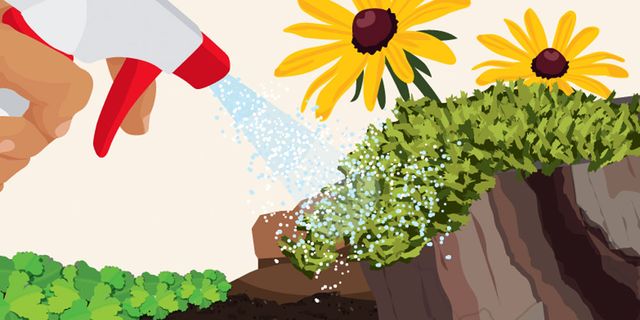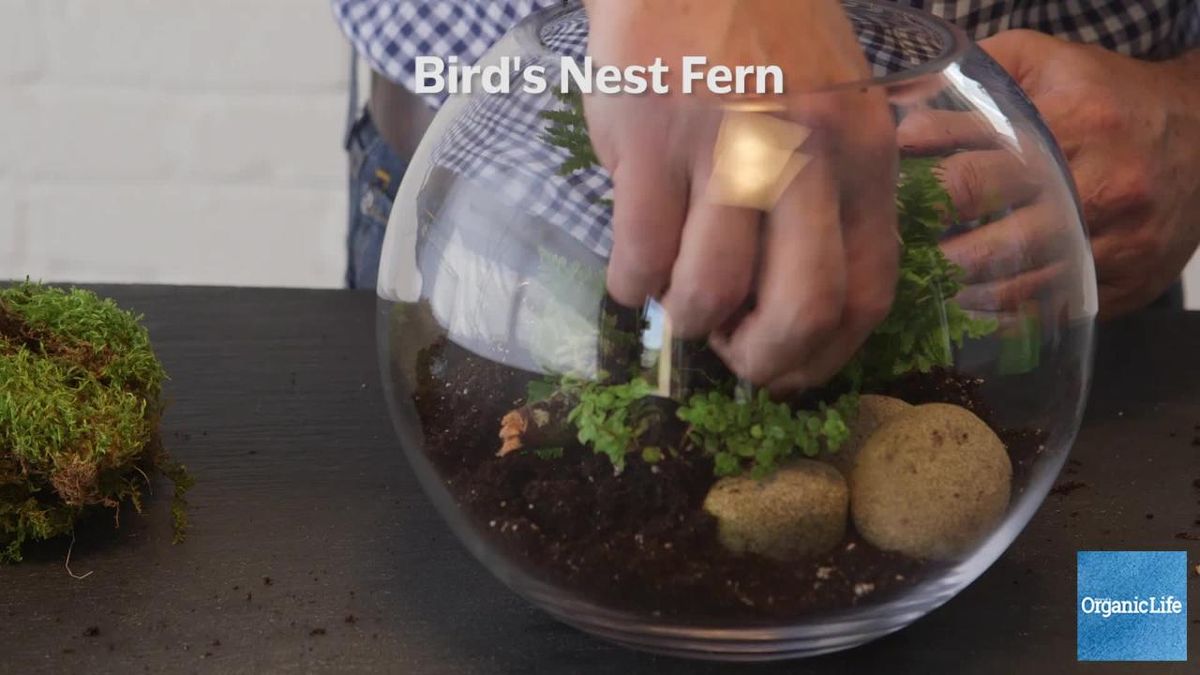When most of us hear the word moss, we think about a speckle of green dotting a fallen tree, hidden deep in the forest. However, moss is all around us – even if we live in an urban environment. Moss is one of the most resilient and interesting types of plants out there with endless possibilities for gardening projects, artwork, and more.
Moss is a bryophyte, which is a family of plants that is broken up into three different types of plants that we commonly refer to as “mosses.”
Musci
Musci are what most people typically refer to as mosses. The distinguishing factor of a musci moss is the clear differentiation between their leaves and stems. Some varieties have stems that are upright, while others have stems that are matted down on the surface of the ground. The most common musci mosses are Sphagnum and Hypnaceae, and they are wonderful for use as soil amendments or for stand-alone DIY projects.
Hepaticae
Hepaticae, also known as liverworts, are identifiable by how soft they are to the touch. They do well in shady areas near water, and prefer high humidity. If you live in a low humidity or drier area, you’ll need to give extra care to your Hepaticae plants if you want them to do well.
Anthocerotae
Anthocerotae, also known as hornworts, are the third type of bryophyte. They’re readily distinguishable by their pointed branches that bear all of their spores. Like Hepaticae, they prefer damp, high-humidity environments, but they also like a reasonable amount of sun. Anthocerotae are also the rarest type of moss, with the fewest species of the three.
If there is a golden rule of moss care, it would be this: Mimic the environment that moss thrives in.
For most mosses, this means a damp, well-lit area with high humidity. But before we get into the finer details of moss care, here are some tools you’ll need to care for your moss gardens:
Pincers
These are used to place moss, propagate it, and remove dead areas in a delicate manner. Try to get pincers with a flat spatula design in order to smooth moss out over a surface.
Spray Bottle
Used both for watering and to increase the humidity in your moss garden environment.
Scissors
Used to cut off dead leaves as well as to control and shape the look of your garden. Try to get the sharpest scissors you can so as to do minimal damage to your moss.
Trowel
If you’re transferring soil into pots or containers to create your moss garden, you’ll need a standard trowel.
Gloves
Although moss isn’t harmful to the touch, you may want to protect your hands from dirt and mess.
The most important part of caring for moss is watering it appropriately. Unlike many other plants, it requires more care with regards to watering as we can see from its natural environments. Moss has no root system to pull moisture from the soil, so all of its water must be taken from the atmosphere and environment.
When watering your moss, you can either mist it, soak it, or water it with a shower nozzle watering can. The key here is to water only when your moss needs it – typically when the color is faded and it’s dry to the touch.
You do not need to fertilize moss. In fact, fertilizing it with a strong nutrient solution will actually cause it to turn brown and die. However, if you’ve wrapped moss around another plant (like in a kokedama), then you should use a highly-diluted nutrient mixture to mist and/or soak the moss so you can feed the plant inside it.
If you’re growing moss outdoors, you’re in luck. You have the opportunity to mimic exactly how moss grows in nature, which means you should locate it in a well-lit area (but not over-exposed to light) away from strong wind gusts. Remember, moss gets all of the nutrients it needs from the sun – you don’t need to locate it on soil.
If you’re growing moss indoors, it needs to be in a bright spot with decent air circulation. A common mistake is to place moss in a darker area under the assumption that this will keep humidity high. Do not make this mistake! Moss needs light to photosynthesize all of the nutrients it needs to survive.
The beauty of using moss in the garden is its versatility. You can use it as ground cover, as a “paint,” or in a completely independent hanging planter.
Moss Kokedamas
“Kokedama” is a Japanese word for growing a plant in a ball of tightly-wrapped moss instead of soil. These are an offshoot of the bonsai culture in Japan and make a striking addition to an indoor or outdoor garden.
To make a kokedama, you’ll need peat soil, sand, akadama, soil, some charcoal, and a moss of your choice. Mix the soil together and form it into a ball, packing it around the roots of the plant you’re using, and then attach the moss around the outside of the soil ball. All you need to do now is fasten the moss to the soil ball with twine or fishing line to ensure it stays on.
Moss Bonsais
Moss can be used as a ground cover for a traditional bonsai tree, but it can also be a bonsai project on its own. Because moss resembles blades of grass when viewed from a distance, artists and gardeners around the world have used it as a way to create mini-landscapes in small containers. You can add small wildflowers, mountain grasses, rocks, and twigs to mimic a forest floor.
Moss Terrariums
As we know that moss thrives in moist, lit environments, it should come as no surprise that moss terrariums are a perfect way to add moss to your home. All you need to do is choose a glass container of your liking and place in it moss, stones, water, and any other features that you think would look beautiful. Then, make sure it gets enough light (typically achieved by using a type of indoor grow light) and you’re off to the races.
Here's how to build a moss terrarium at home:
Moss Paint
Because moss is so versatile, it can be turned into a “paint” of sorts and applied to walls. This process is known as making “eco-graffiti” and is easier than it looks.
All you’ll need is:
A clump or two of moss
2 cups of buttermilk
2 cups of water
½ tsp of sugar
Once you gather these ingredients, blend them all together until the consistency is similar to paint. Then, simply apply it to walls in whatever design you desire. You can get creative here – use stencils, write words, or draw animals. You’re only limited by your imagination.
All in all, moss is an underrated plant that deserves a place in your garden, whether you add it indoors or outdoors. With these ideas and care instructions, you have more than enough information to get started with a beautiful moss garden.
This article was originally published on PartSelect.com.

















